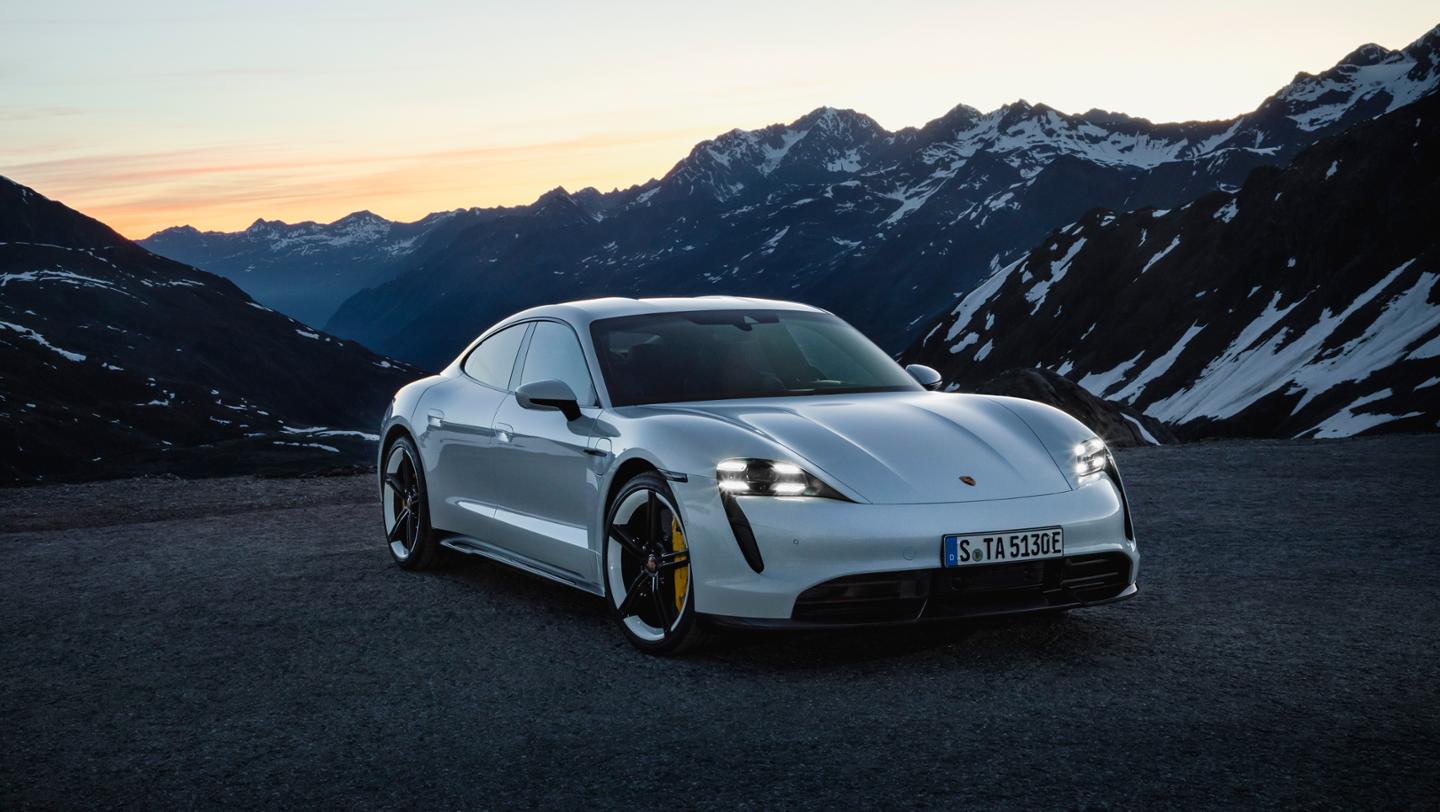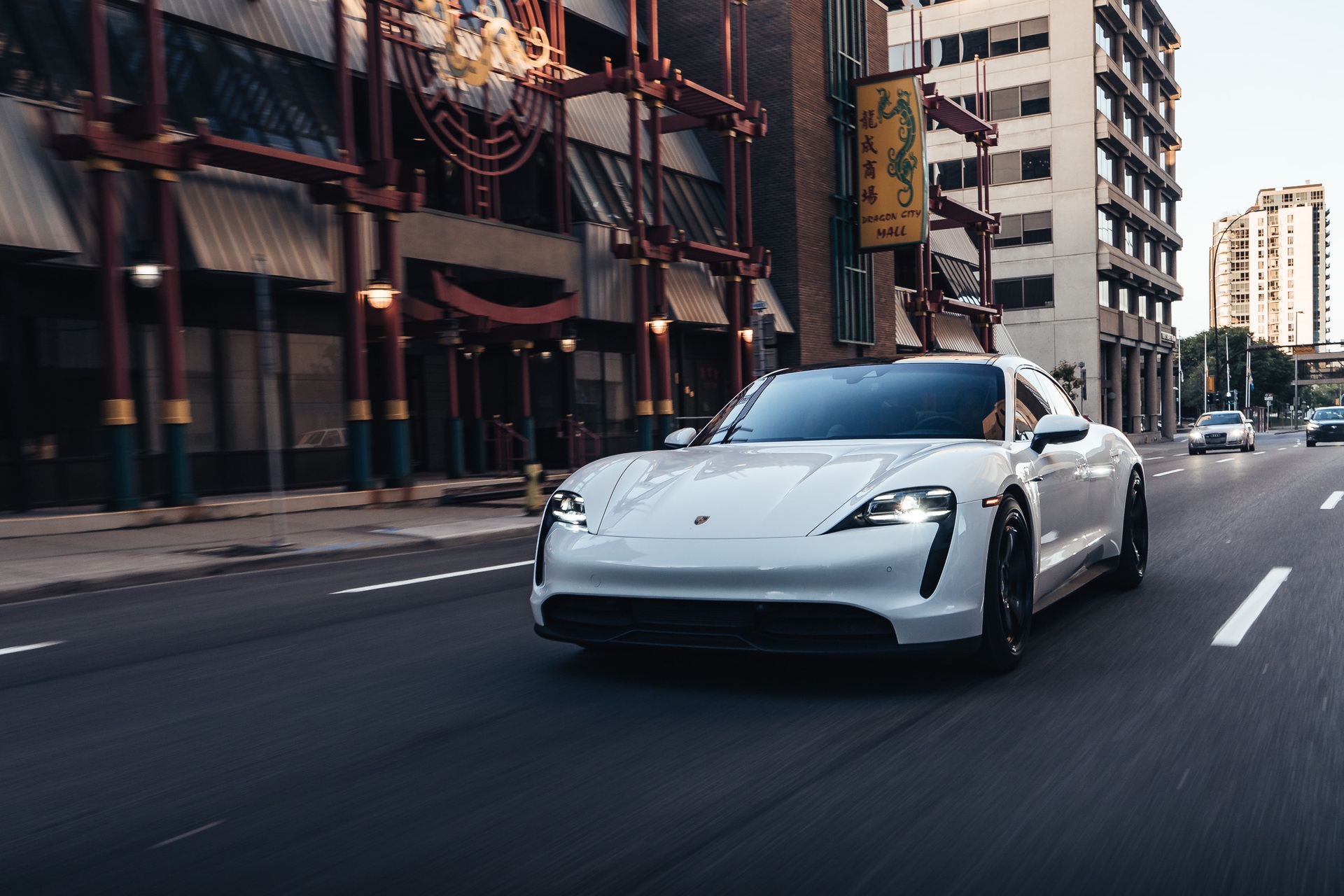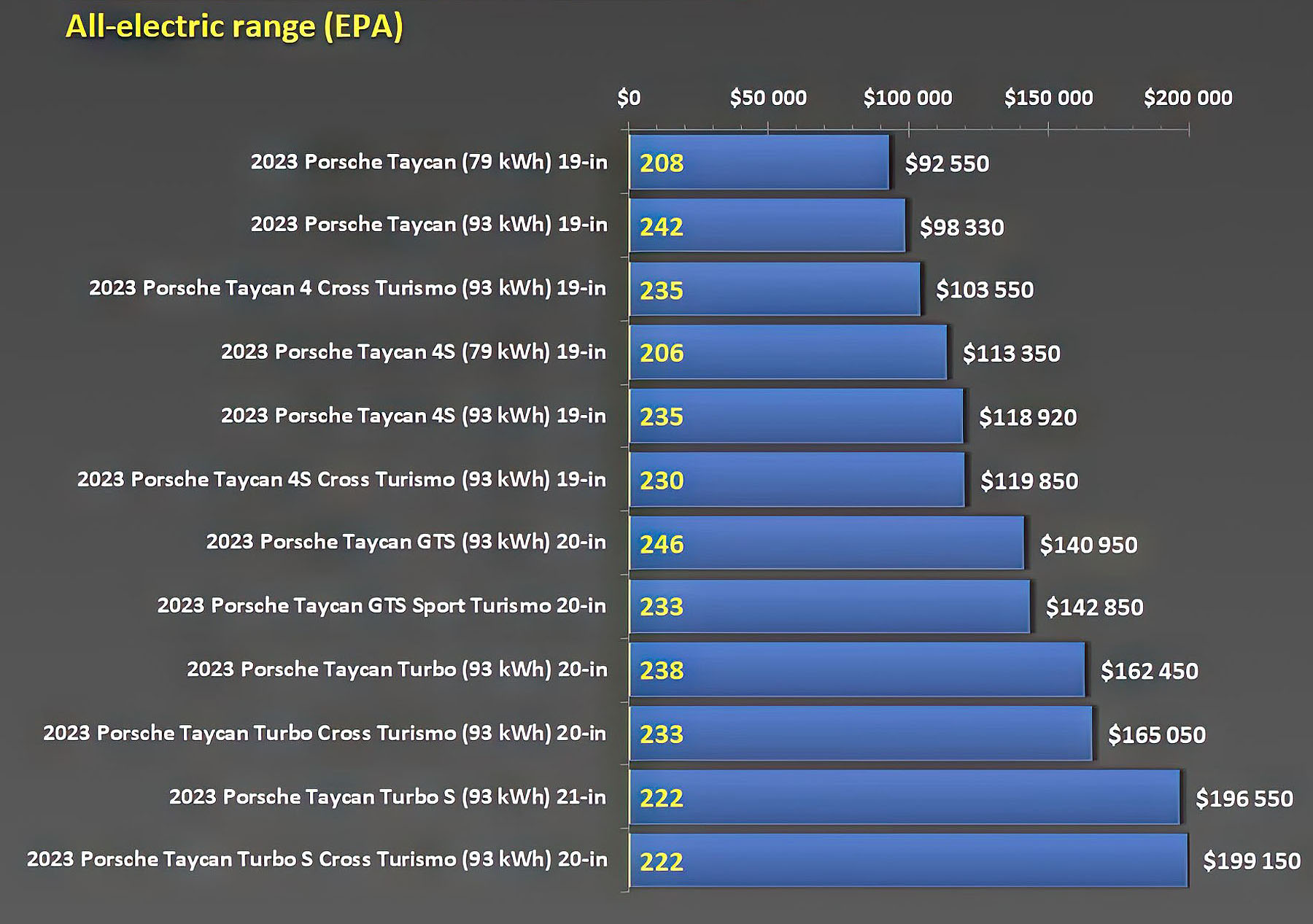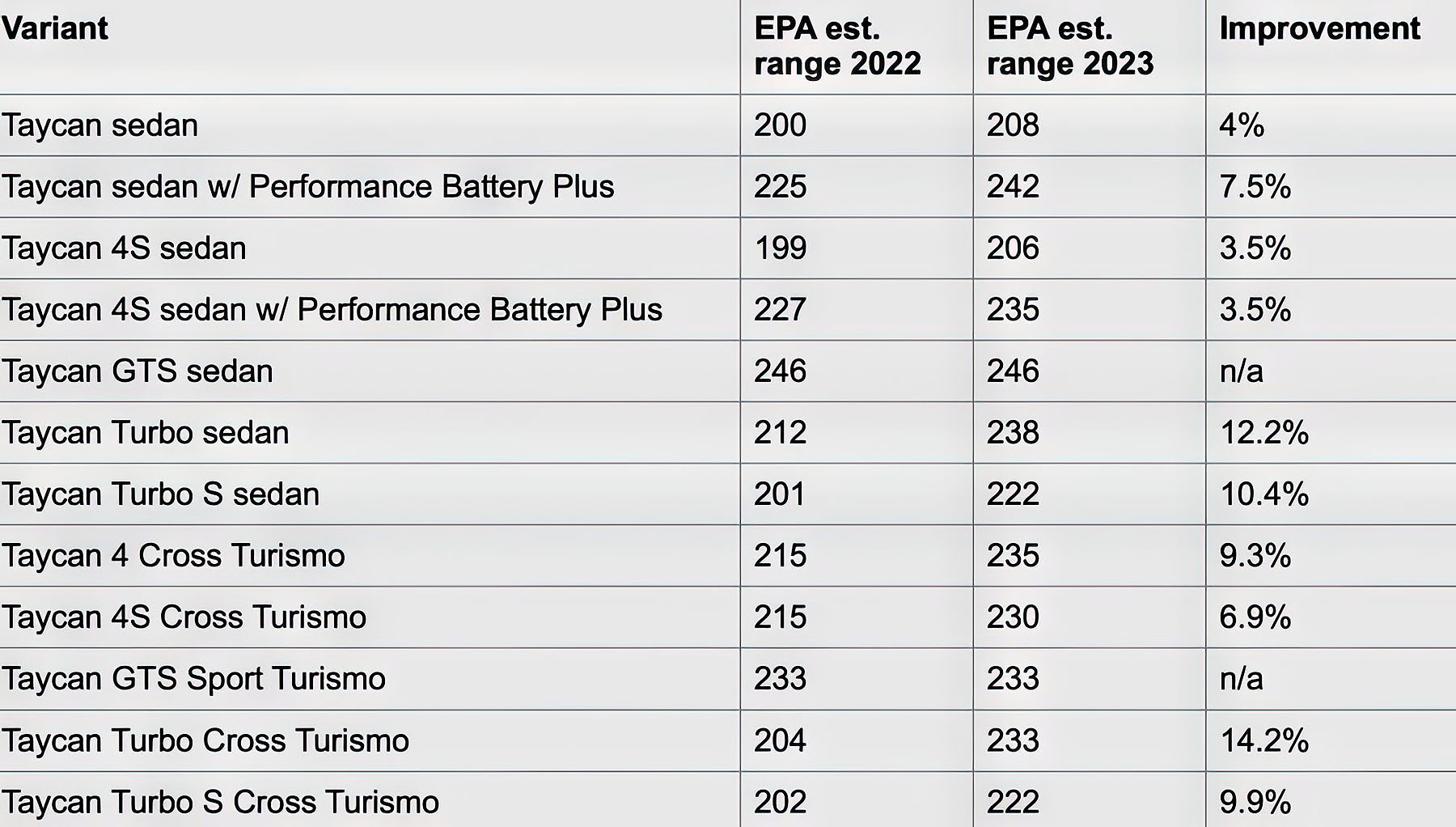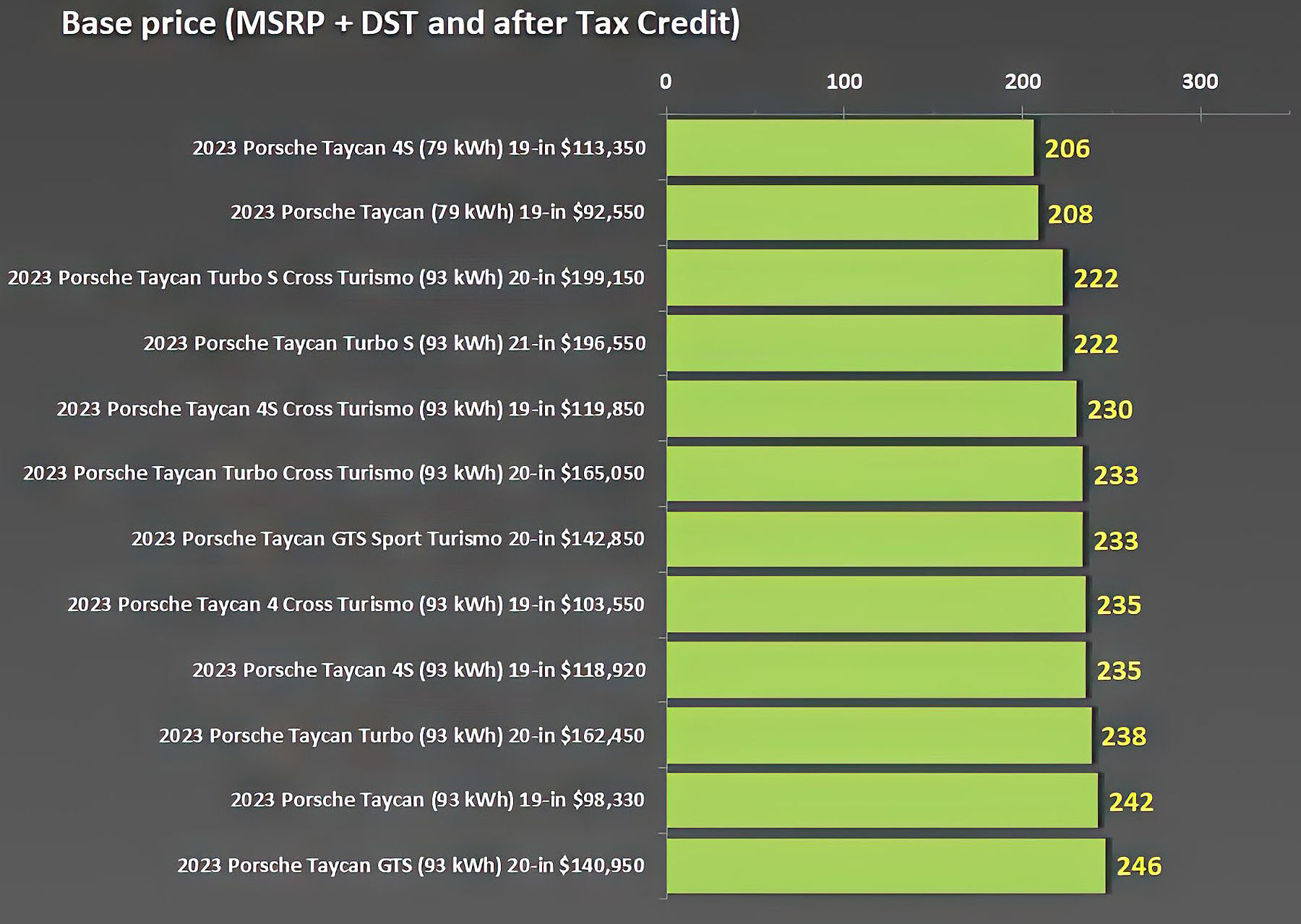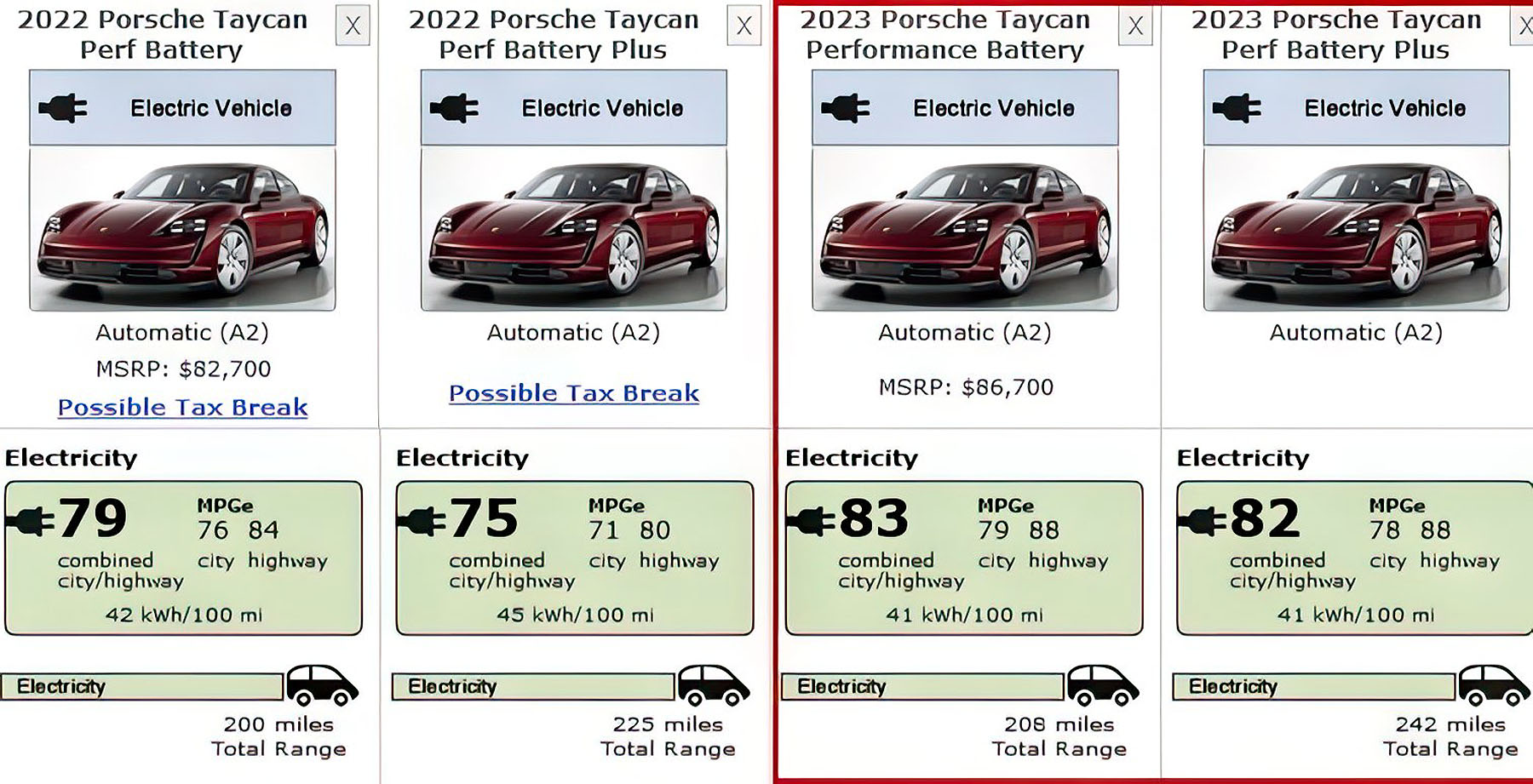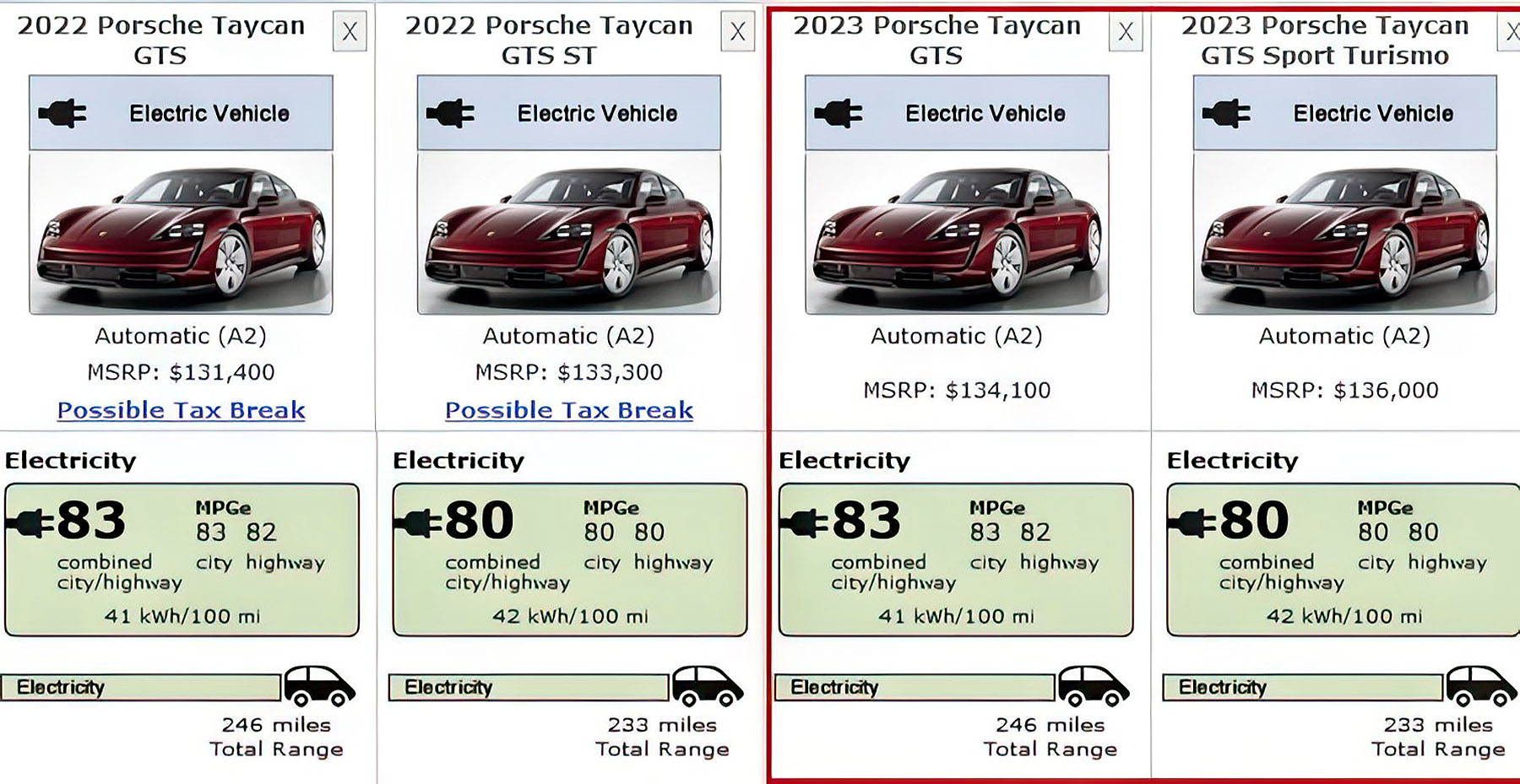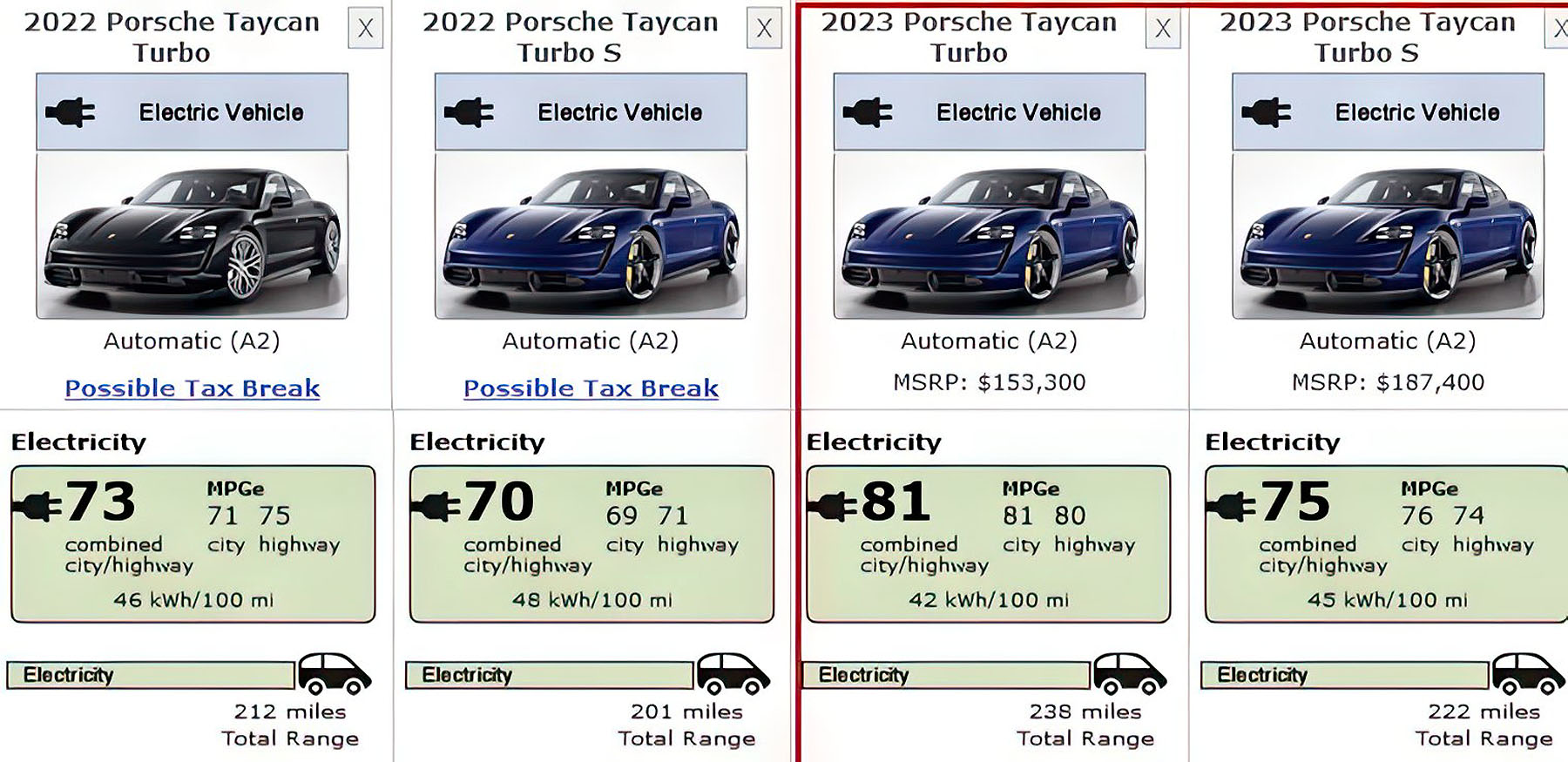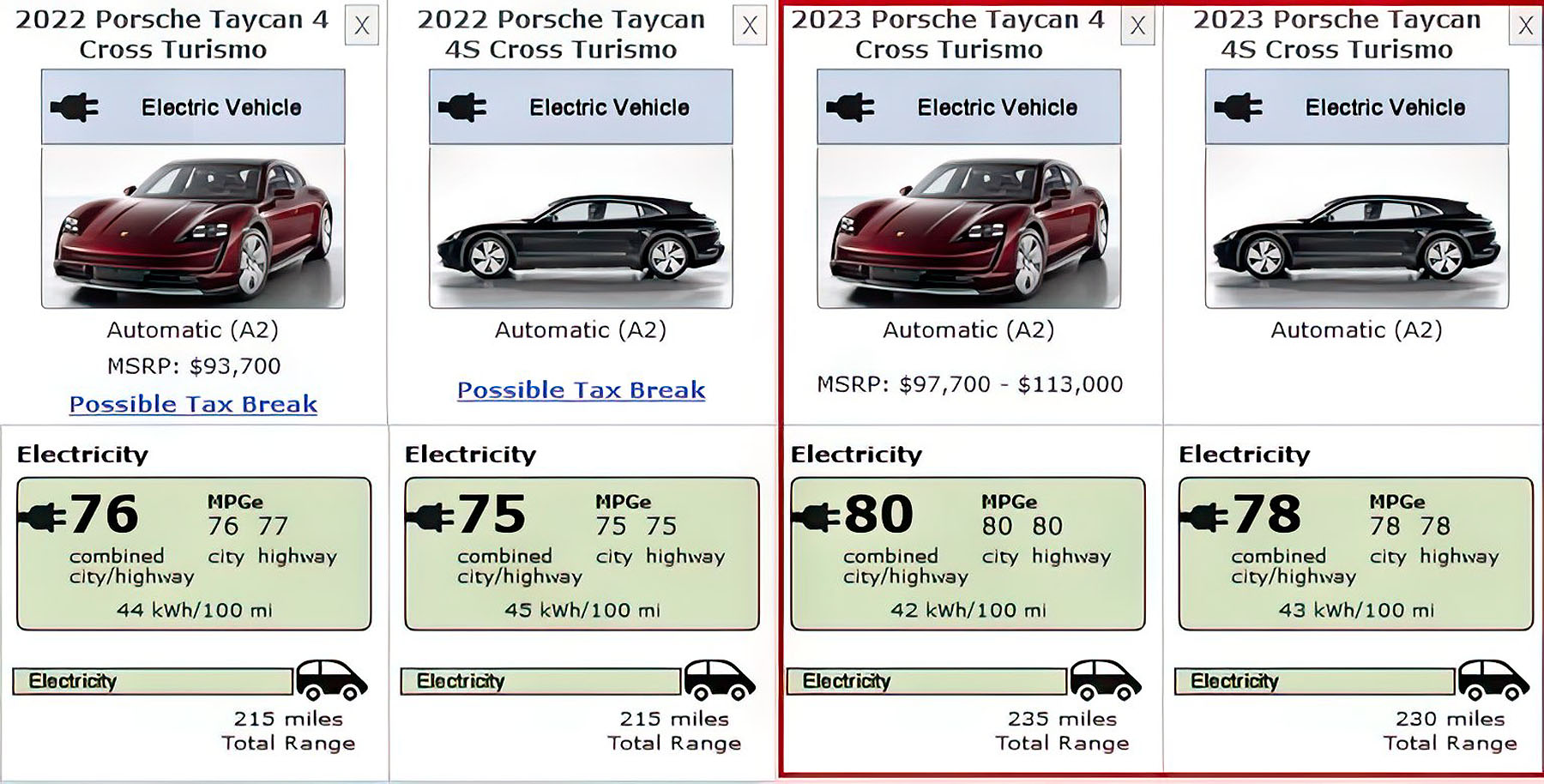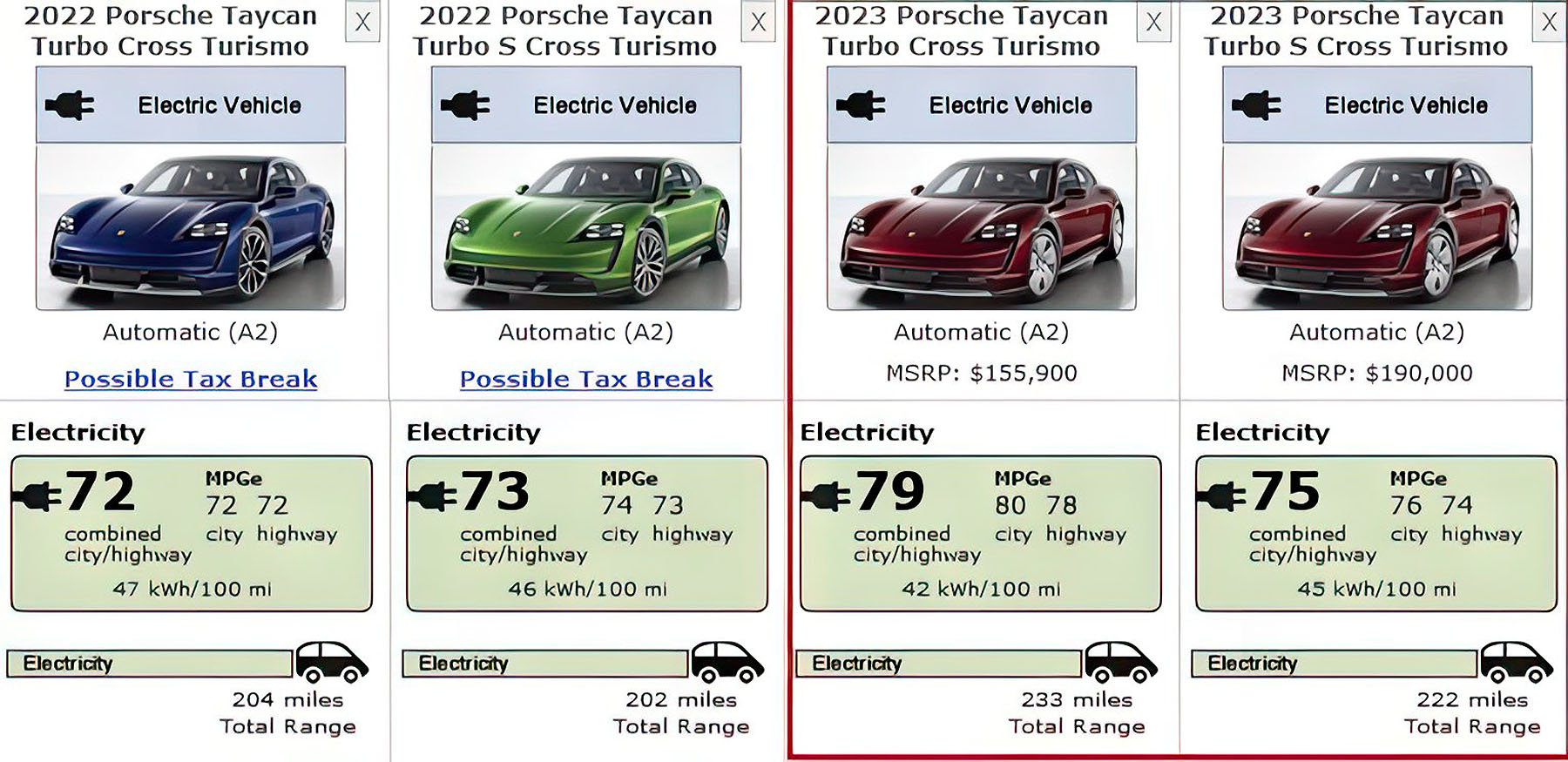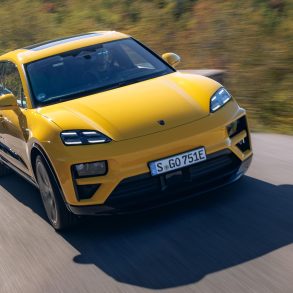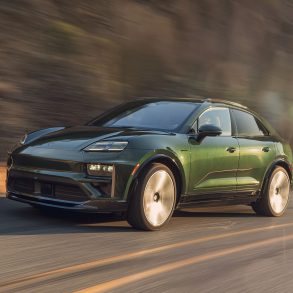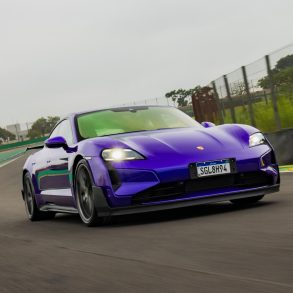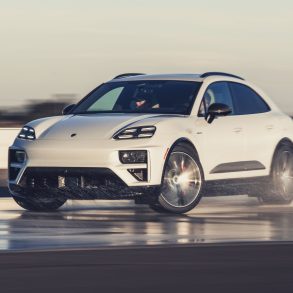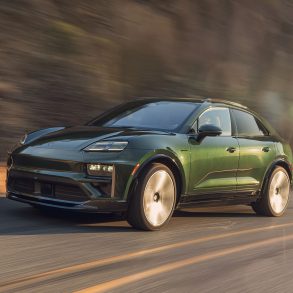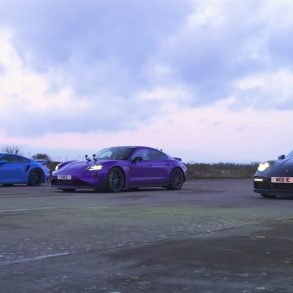Exclusivity at a price
The Porsche Taycan is one of the most exclusive and expensive all-electric models on the market in the United States. In the 2023 model year, there are 12 main versions of three body types – Porsche Taycan (sedan), Porsche Taycan Sport Turismo, and Porsche Taycan Cross Turismo.
Prices
Prices of the Porsche Taycan increased quite significantly at all levels – starting price, destination charge, and lack of eligibility for the $7,500 federal tax credit. Because of that, the effective purchase cost is way higher than in the case of the 2022 model year. The entry-level Porsche Taycan, with a 79.2-kilowatt-hour (kWh) battery, has an MSRP of $90,900 (plus a $1,650 destination charge), which means $92,550 total without any options. Over a year ago, this version was offered for $82,700 (plus $1,350 DST) and eligible for a $7,500 federal tax credit, so the effective cost was $76,550. We are talking about a $16,000 (or 20.9 percent) difference, despite the MSRP increasing by only $8,200 (10 percent). A similar increase in effective cost concerns basically all Porsche Taycan cars. Prices with DST span from $90,900 up to $199,150.
2003 Taycan Pricing
Model/Wheels Base Price Dest. Charge Tax Credit Effective Price
(79 kWh) 19-inch $90,900 +$1,650 N/A $92,550
(93 kWh) 19-inch $96,680 +$1,650 N/A $98,330
4S (79 kWh) 19-inch $111,700 +$1,650 N/A $113,350
4S (93 kWh) 19-inch $117,270 +$1,650 N/A $118,920
GTS (93 kWh) 20-inch $139,300 +$1,650 N/A $140,950
GTS Sport Turismo (93 kWh) 20-inch $141,200 +$1,650 N/A $142,850
Turbo (93 kWh) 20-inch $160,800 +$1,650 N/A $162,450
Turbo S (93 kWh) 21-inch $194,900 +$1,650 N/A $196,550
4 Cross Turismo (93 kWh) 19-inch $101,900 +$1,650 N/A $103,550
4S Cross Turismo (93 kWh) 19-inch $118,200 +$1,650 N/A $119,850
Turbo Cross Turismo (93 kWh) 20-inch $163,400 +$1,650 N/A $165,050
Turbo S Cross Turismo (93 kWh) 20-inch $197,500 +$1,650 N/A $199,150
Porsche announced earlier this year that it intends to apply “significant price increases” on its models when it releases the new model year vehicles in the middle of 2023, which potentially means that the current prices might go even higher. The question is whether the Porsche Taycan will attract customers at those higher prices. So far in 2023, sales decreased year-over-year, but we know that it’s more related to the limited supply rather than demand. Production is expected to increase soon. Here is the list of 12 main Porsche Taycan versions from the least to the most expensive:
EPA Range and Efficiency
In the 2023 model year, the EPA Combined range of the Porsche Taycan family is from 206 miles (335 km) up to 246 miles (396 km). In most cases, they are better by several percent than a year ago, thanks to software updates according to the manufacturer. Older Taycans can get this update to improve range as well.
Those numbers should be treated as very conservative ones because in many tests, Porsche Taycan noted significantly higher real-world range (which might be associated with the EPA test cycle and the two-speed rear transmission). If we take a look at the EPA Highway range estimates (calculated briefly from efficiency numbers, which is not entirely correct due to the included charging losses), then the range would be from 206 miles up to 260 miles.
For example, in InsideEVs‘ 70 miles per hour test, the base version with a 93.4-kWh battery achieved a range of 305 miles. It was a 2022 model-year version with the 2023 software update that noticeably increased the range. The EPA Combined range of this car today is 242 miles (7.5 percent more than 225 miles in 2022MY). However, to make things fairer, the EPA Highway range is closer to 260 miles (estimated roughly from efficiency ratings). The difference is then some 45 miles or 17 percent more (compared to 63 miles and 26 percent difference to the EPA Combined value). Our guess is that one should add at least 20 percent to the EPA Combined range to get a safe bet on the real-world highway range (within speed limits).
Three main elements affect the driving range of a particular Taycan body type – battery, powertrain, and wheel size. Just like in the previous model years, there are two battery types used in the Porsche Taycan family – a 79.2-kWh and 93.4-kWh pack. The smaller unit is used only in the base Taycan and Taycan 4S, while all other versions have the larger battery. Regarding powertrain, all versions are dual-motor, all-wheel drive (AWD), besides the entry-level Taycan, which is single-motor, rear-wheel drive (RWD). Power output usually increases in higher trim levels (from 300 kW to 560 kW peak), providing quicker acceleration.
Another thing that affects range is wheels – their size varies from 19 inches up to 21 inches. As we can see on the chart, the highest range value was noted by the Porsche Taycan GTS – 246 miles (396 km), closely followed by the base Porsche Taycan (93 kWh) – 242 miles (389 km). The ultra-quick Turbo S versions of the family (the least aerodynamic and one of the heaviest) were rated at 222 miles (357 km). Those cars can accelerate from 0 to 60 mph in just 2.6-2.7 seconds (launch mode), according to the manufacturer. The lowest range ratings were handed over to the 79.2-kWh battery versions – 206-208 miles (331-335 km).
Range and Performance
Model/battery/wheel Drive EPA Range 0-60 mph (sec) Top Speed
(79 kWh) 19-inch RWD 208 mi (335 km) 5.1 143 mph (230 km/h)
(93 kWh) 19-inch RWD 242 mi (389 km) 5.1 143 mph (230 km/h)
4S (79 kWh) 19-inch AWD 206 mi (331 km) 3.8 155 mph (249 km/h)
4S (93 kWh) 19-inch AWD 235 mi (378 km) 3.8 155 mph (249 km/h)
GTS (93 kWh) 20-inch AWD 246 mi (396 km) 3.5 155 mph (249 km/h)
GTS Sport Turismo 20-inch AWD 233 mi (375 km) 3.5 155 mph (249 km/h)
Turbo (93 kWh) 20-inch AWD 238 mi (383 km) 3.0 161 mph (259 km/h)
Turbo S (93 kWh) 21-inch AWD 222 mi (357 km) 2.6 161 mph (259 km/h)
4 Cross Turismo (93 kWh) 19-inch AWD 235 mi (378 km) 4.8 137 mph (220 km/h)
4S Cross Turismo (93 kWh) 19-inch AWD 230 mi (370 km) 3.9 149 mph (240 km/h)
Turbo Cross Turismo (93 kWh) 20-inch AWD 233 mi (375 km) 3.1 155 mph (249 km/h)
Turbo S Cross Turismo (93 kWh) 20-inch AWD 222 mi (357 km) 2.7 155 mph (249 km/h)
In terms of energy consumption, including charging losses, according to EPA, the values vary from 406 to 449 watt-hours per mile (Wh/mi). But again, those are just indications for the EPA Combined test cycle and we can assume 20-25 percent better results.
EPA range and efficiency ratings (12 versions)
Charging
The Porsche Taycan is equipped with a 9.6-kilowatt (kW) onboard charger, which is promised to fully recharge the battery in 9.5 or 10.5 hours depending on the battery (respectively 79.2 or 93.4-kWh). There is also an optional 19.2-kW charger ($1,680), which cuts the charging time in half, as long as the user can access a charging point with such high power. DC fast charging of the Porsche Taycan from 5 to 80 percent of state-of-charge (SOC) takes about 22.5 minutes (both battery types). The smaller battery goes up to 225 kW, while the bigger one can accept up to 270 kW. Because the batteries are relatively high-voltage ones (the nominal system voltage is 613 or 723 V), the power output at lower-voltage chargers (400 V) is usually strictly limited. To get a higher power (up to 150 kW) at 400 V chargers, users are asked to buy additional power electronics hardware ($460 option).
Original article HERE


